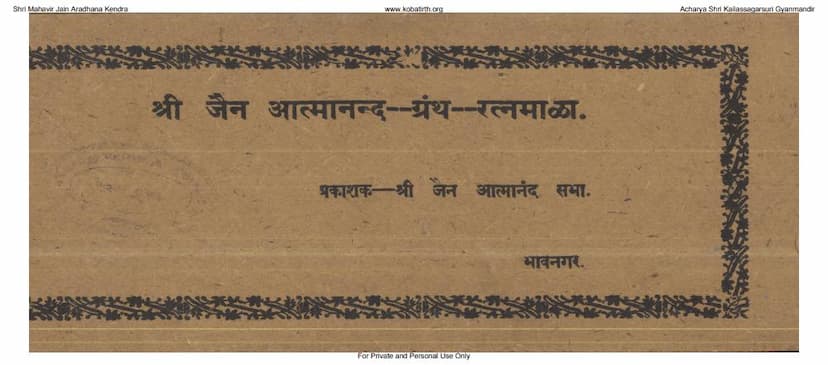Dashkarm Paddhati
Added to library: September 1, 2025

Summary
This Jain text, "Dashkarm Paddhati" by Hariprasad Bhagirath, published by Hariprasad Bhagirath, is a guide to the ten traditional Sanskaras (sacraments or rites of passage) performed in a Jain household. The provided pages outline the procedures and associated mantras for each of these important life cycle rituals.
The table of contents on page 3 lists the ten karmas:
- Garbhadhan (Conception): The ritual to bless conception and ensure a healthy pregnancy.
- Pumsavan (Ensuring a Male Child): A ritual performed early in pregnancy to ensure the birth of a male child.
- Simantonnayan (Parting of the Hair): A ritual performed during pregnancy to protect the mother and the developing fetus, typically around the sixth or eighth month.
- Jatakarma (Birth Rituals): Ceremonies performed immediately after a child's birth, including purification and bestowing blessings for a long and prosperous life.
- Namkarna (Naming Ceremony): The ritual of giving the child their formal name.
- Nishkraman (First Outing): The ceremony when the baby is taken out of the house for the first time, usually to see the sun.
- Anprashan (First Solid Food): The ritual of giving the baby their first solid food, typically rice.
- Chudakarma (Tonsure Ceremony): The ritual of shaving the child's head for the first time, usually performed between the first and third year.
- Karnavedh (Ear Piercing): The ritual of piercing the child's ears, usually done between the first and third year.
- Upanayan (Investiture with the Sacred Thread): A significant ceremony for boys, marking their transition to formal education and spiritual life, where the sacred thread (yajnopavita) is worn.
The text then proceeds to detail each of these rituals with specific instructions, mantras, and offerings. For example, it describes the preparatory steps, the role of the priest (Brahmana), the arrangement of sacred items (Agni, Havya, Sruva, etc.), the sequence of oblations and recitations, and the concluding rituals like offering dakshina (fees) and serving meals to Brahmins.
The text also includes details on:
- The importance of auspicious timings: Mentioning specific constellations (Nakshatras), days, and times for performing each ritual.
- Purification rituals: Describing the cleansing of the space, participants, and sacred items.
- Mantras: Providing Sanskrit verses from Vedic traditions, which are integral to the performance of these ceremonies.
- Symbolic offerings: Detailing the use of ghee, grains, fruits, flowers, and other items in the fire sacrifices.
- The role of the priest: Emphasizing the guidance and performance of the rituals by a qualified Brahmin.
- The participation of parents: Describing the duties and involvement of the father and mother in each Sanskara.
- Specific details for each ceremony: The text goes into granular detail, such as the precise placement of hands, the direction of offerings, and the specific words to be spoken during each stage.
Following these ten life-cycle ceremonies, the book also outlines:
- Vedarambh (Beginning of Vedic Studies): The ceremony marking the commencement of formal education, often involving the study of scriptures.
- Samavartan (Return from Studentship): The ritual that signifies the completion of education and the student's return to society.
- Vivah (Marriage): The elaborate ceremony of wedding, involving various rituals, offerings, and blessings.
- Chaturthi Karma (Fourth Day Ritual): A post-wedding ritual, often observed on the fourth day after the marriage.
The latter part of the provided text (starting from page 80) details the "Vivah" (Marriage) and "Chaturthi Karma" (Fourth Day Ritual) in considerable detail, covering the arrangements for the wedding mandap, the selection of priests, the offering of gifts, the tying of the sacred knot, and the specific rituals performed on the fourth day after the wedding. It also includes a section on "Samagri" (materials required) for the rituals.
In essence, "Dashkarm Paddhati" serves as a comprehensive manual for Jain rituals, ensuring the continuation of age-old traditions and providing guidance for parents to imbue their children's lives with spiritual significance from conception through education and marriage, all within a Jain framework.